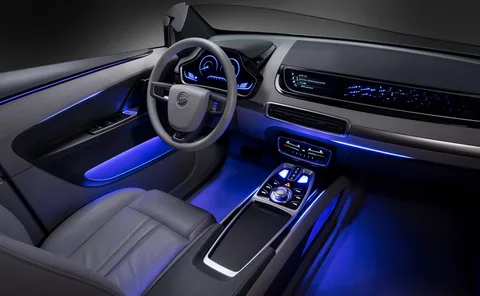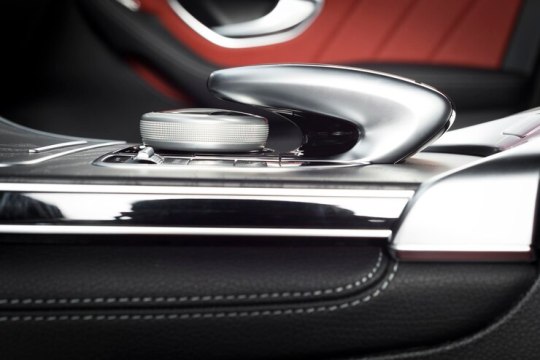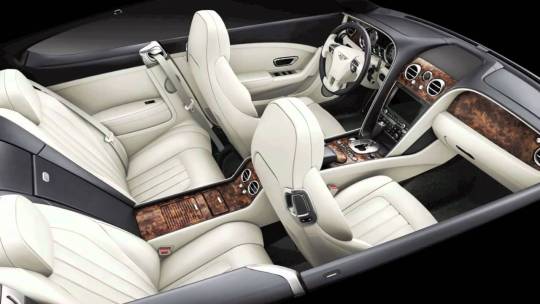#VehicleDesign
Explore tagged Tumblr posts
Text




Pen drawing and final painted illustrations for armoured vehicles for an alternative WW1 extended setting, '1921'
#peteashford#artists on tumblr#concept art#illustration#digital art#ww1#ww1 art#armoured vehicles#tank art#tanks#pen drawing#ink drawing#vehicledesign#militaryart#military vehicles#alternate history#dieselpunk#military
29 notes
·
View notes
Text

New here! Plenty more art to come. For now, here's a giant mechanical crab.
#art#artists on tumblr#artwork#digital art#digital illustration#digital painting#doodle#drawing#mecha#vehicledesign#robot#oc#oc art#my art#small artist#daily drawing
24 notes
·
View notes
Text

Practiced drawing clothes and shoes

f0kin legend
#sketch#sketches#sketching#sketchbook#test#traning#trying#art#arts#artpractice#motor#pen#notebook#quicksketch#drawing#draw#drawings#vehicledesign#designsketch#industrialdesignsketch#uniform#armor#clothes#s.t.a.l.k.e.r.#mercenary#millitary#soldier#chibi#helmet
10 notes
·
View notes
Text

At a crossroads. Recent quick sketchysketch.
#cyberpunk#artists on tumblr#scifi#science fiction art#illustration#vehicledesign#speedpaint#spitpaint#80s beats#neoncore#nightdrive
3 notes
·
View notes
Text
Automotive Interior Materials Market Analysis Reveals Growth Drivers, Segmentation Trends, and Competitive Dynamics Globally
The automotive interior materials market plays a pivotal role in shaping vehicle design, comfort, safety, and customer satisfaction. From dashboards and door panels to seat fabrics and headliners, interior materials are central to the vehicle experience. A comprehensive market analysis reveals that this segment is evolving rapidly, driven by environmental regulations, rising consumer expectations, electrification, and new aesthetic trends. Automakers and material suppliers are responding by innovating with sustainable, lightweight, and tech-integrated materials.
This analysis explores the key growth drivers, material segments, competitive landscape, and regional developments influencing the global automotive interior materials industry.

Market Overview and Growth Drivers
The global automotive interior materials market is experiencing consistent growth, underpinned by several key drivers:
Consumer Demand for Enhanced Comfort and Design: Vehicle buyers are increasingly focused on in-cabin comfort, aesthetics, and customization. Materials that provide a premium feel—like leather, wood trim, brushed metal, and soft-touch plastics—are gaining popularity.
Sustainability and Eco-Friendly Initiatives: Automakers are under pressure to reduce the environmental impact of vehicles, not only in emissions but also in production materials. Recycled fabrics, natural fibers, and low-VOC materials are becoming mainstream.
Electrification and New Mobility Concepts: The rise of electric vehicles (EVs) and autonomous mobility is transforming interior design priorities. With quieter cabins and more user-focused features, there’s growing demand for noise-dampening, smart, and modular materials.
Technological Integration: Infotainment systems, touch-sensitive panels, and ambient lighting are now standard in many cars. Materials must seamlessly accommodate these technologies without compromising durability or design.
These trends are shifting the competitive dynamics and influencing product strategies across the supply chain.
Material Segmentation Insights
Automotive interior materials can be segmented into various categories, with each material offering unique benefits, cost considerations, and design potential:
Leather and Synthetic Leather: Still among the most preferred materials in premium vehicles. Synthetic variants, such as polyurethane (PU) leather, offer similar appeal at a lower cost and with better environmental profiles.
Plastics and Polymers: These dominate the market in terms of volume, used extensively in dashboards, consoles, and trim. Thermoplastic polyolefins (TPOs), acrylonitrile butadiene styrene (ABS), and polypropylene are popular due to cost-effectiveness and design flexibility.
Fabrics and Textiles: Fabrics offer breathability and a variety of textures. Innovations in antimicrobial, stain-resistant, and climate-responsive fabrics are increasing their utility across segments.
Composites and Natural Materials: A rising category, these include bamboo fibers, cork-based panels, and recycled cotton blends—valued for sustainability and a natural aesthetic.
Market analysis suggests a strong trend toward combining multiple materials to balance performance, sustainability, and cost, particularly in mid-range and premium vehicles.
Competitive Landscape and Key Players
The automotive interior materials market is highly competitive, with global and regional players striving to meet the evolving demands of OEMs and end-users. Key players include:
Adient
Lear Corporation
Faurecia
Toyota Boshoku Corporation
Sage Automotive Interiors
Grupo Antolin
These companies are investing heavily in R&D to develop next-generation materials that align with EV interior needs and sustainability goals. Strategic collaborations with carmakers and investments in localized production facilities are also common as companies seek to expand their global footprint.
Smaller regional manufacturers, especially in Asia-Pacific and Eastern Europe, offer cost-competitive solutions and are gaining market share in domestic markets, challenging the dominance of multinational giants.
Regional Market Analysis
Asia-Pacific dominates the global automotive interior materials market, driven by high vehicle production in China, India, Japan, and South Korea. Rapid urbanization, rising middle-class income, and growing demand for passenger cars are key contributors. The region is also a major hub for cost-effective manufacturing and innovation.
Europe is characterized by strong environmental regulation and a preference for sustainable, high-end interior materials. German automakers, in particular, are at the forefront of integrating eco-conscious and technologically advanced interiors.
North America remains a significant market, especially for SUVs and luxury vehicles, where interior comfort and style play a critical role in buyer decisions. There's also growing interest in EV interiors, boosting demand for noise-dampening and tech-integrated materials.
Latin America and Middle East & Africa are emerging markets with moderate growth, where durable and low-cost materials are more in demand due to economic constraints and regional climate conditions.
Challenges and Opportunities
Despite strong growth potential, the market faces a number of challenges:
Raw Material Price Volatility: The cost of leather, plastics, and advanced composites can fluctuate, impacting profitability.
Complex OEM Requirements: Automakers demand highly customized solutions tailored to each vehicle model, requiring flexibility and fast innovation.
Sustainability Compliance: Meeting regulatory expectations for recyclability, emissions, and carbon neutrality requires ongoing investment.
However, these challenges also present opportunities:
Suppliers who offer lightweight, recyclable, and high-performance materials can position themselves as key partners in EV and sustainable mobility initiatives.
Technologies such as 3D printing and digital simulation can speed up design-to-production timelines, enhancing responsiveness.
Conclusion
The automotive interior materials market is being shaped by an intricate blend of sustainability, innovation, consumer behavior, and global competition. As materials become more critical to the identity and functionality of vehicles, automakers and suppliers must stay ahead of trends that emphasize design, comfort, and eco-responsibility.
With growth opportunities across segments, technologies, and geographies, companies that embrace material innovation and align with OEM strategies will find themselves well-positioned in the evolving automotive landscape.
#AutomotiveInteriorMaterialMarket#InteriorMaterials#AutoIndustryTrends#VehicleDesign#SustainableMaterials
0 notes
Text
Automotive Engineering Service Market to See Strong Growth
According to Market Statistix, the Automotive Engineering Service Market revenue and growth prospects are expected to grow at a significant rate during the analysis period of 2024-2032, with 2023 as the base year. Automotive Engineering Service Market research is an ongoing process. Regularly monitor and evaluate market dynamics to stay informed and adapt your strategies accordingly. As a market research and consulting firm, we offer market research reports that focus on major parameters, including Target Market Identification, Customer Needs and Preferences, Thorough Competitor Analysis, Market Size and market Analysis, and other major factors. In the end, we provide meaningful insights and actionable recommendations that inform decision-making and strategy development.
The Automotive Engineering Service Market is projected to experience steady growth, expanding at a CAGR of 8.1% over the forecast period.
Who are the key players operating in the industry?
EDAG Engineering GmbH (Switzerland), Capgemini Engineering (France), IAV GmbH (Germany), FEV Group (Canada), AVL (Austria), Harman International (U.S.), Robert Bosch GmbH (Germany), Continental AG (Germany), L&T Technology Services Ltd. (India), Bertrandt AG (Germany)
Request a sample on this latest research report Automotive Engineering Service Market spread across 100+ pages and supported with tables and figures is now available @ https://www.marketstatistix.com/sample-report/global-automotive-engineering-service-market
Automotive Engineering Service Market Overview and Insights:
Market Statistix is solidifying its reputation as a leading market research and consulting service provider, delivering data-driven insights that help businesses make informed strategic decisions. By focusing on detailed demand analysis, accurate market forecasts, and competitive evaluations, we equip companies with the essential tools to succeed in an increasingly competitive landscape. This comprehensive Automotive Engineering Service market analysis offers a detailed overview of the current environment and forecasts growth trends through 2032. Our expertise enables clients to stay ahead of the curve, providing actionable insights and competitive intelligence tailored to their industries.
What is included in Automotive Engineering Service market segmentation?
The report has segmented the market into the following categories:
Segment by Type: Mechanical, Embedded, Software
Segment by Application: Body Engineering, Chassis Engineering, Powertrain Engineering, Safety Systems, Infotainment Systems, Others
Automotive Engineering Service market is segmented by company, region (country), by Type, and by Application. Players, stakeholders, and other participants in the Automotive Engineering Service market will be able to gain the upper hand as they use the report as a powerful resource. The segmental analysis focuses on revenue and forecast by Type and by Application in terms of revenue and forecast for the period 2019-2032.
Have a query? Market an enquiry before purchase @ https://www.marketstatistix.com/enquiry-before-buy/global-automotive-engineering-service-market
Competitive Analysis of the market in the report identifies various key manufacturers of the market. We do company profiling for major key players. The research report includes Competitive Positioning, Investment Analysis, BCG Matrix, Heat Map Analysis, and Mergers & Acquisitions. It helps the reader understand the strategies and collaborations that players are targeting to combat competition in the market. The comprehensive report offers a significant microscopic look at the market. The reader can identify the footprints of the manufacturers by knowing about the product portfolio, the global price of manufacturers, and production by producers during the forecast period.
As market research and consulting firm we offer market research report which is focusing on major parameters including Target Market Identification, Customer Needs and Preferences, Thorough Competitor Analysis, Market Size & Market Analysis, and other major factors.
Purchase the latest edition of the Automotive Engineering Service market report now @ https://www.marketstatistix.com/buy-now?format=1&report=103
The Automotive Engineering Service market research study ensures the highest level of accuracy and reliability as we precisely examine the overall industry, covering all the market fundamentals. By leveraging a wide range of primary and secondary sources, we establish a strong foundation for our findings. Industry-standard tools like Porter's Five Forces Analysis, SWOT Analysis, and Price Trend Analysis further enhance the comprehensiveness of our evaluation.
A Comprehensive analysis of consumption, revenue, market share, and growth rate is provided for the following regions:
-The Middle East and Africa region, including countries such as South Africa, Saudi Arabia, UAE, Israel, Egypt, and others.
-North America, comprising the United States, Mexico, and Canada.
-South America, including countries such as Brazil, Venezuela, Argentina, Ecuador, Peru, Colombia, and others.
-Europe (including Turkey, Spain, the Netherlands, Denmark, Belgium, Switzerland, Germany, Russia, the UK, Italy, France, and others)
-The Asia-Pacific region includes Taiwan, Hong Kong, Singapore, Vietnam, China, Malaysia, Japan, the Philippines, South Korea, Thailand, India, Indonesia, and Australia.
Browse Executive Summary and Complete Table of Content @ https://www.marketstatistix.com/report/global-automotive-engineering-service-market
Table of Contents for the Automotive Engineering Service Market includes the following points:
Chapter 01 - Automotive Engineering Service Executive Summary
Chapter 02 - Market Overview
Chapter 03 - Key Success Factors
Chapter 04 - Automotive Engineering Service Market – Pricing Analysis Overview
Chapter 05 - Overview of the History of the Automotive Engineering Service Market
Chapter 06 - Automotive Engineering Service Market Segmentation [e.g. Type (Mechanical, Embedded, Software), Application (Body Engineering, Chassis Engineering, Powertrain Engineering, Safety Systems, Infotainment Systems, Others)]
Chapter 07 - Analysis of Key and Emerging Countries in the Automotive Engineering Service
Chapter 08 - Automotive Engineering Service Market Structure and Value Analysis
Chapter 09 - Competitive Landscape and Key Challenges in the Automotive Engineering Service Market
Chapter 10 - Assumptions and Abbreviations
Chapter 11 - Market Research Approach for Automotive Engineering Service
About Market Statistix:
Market Statistix is an expert in the area of global market research consulting. With the aid of our ingenious database built by experts, we offer our clients a broad range of tailored Marketing and Business Research Solutions to choose from. We assist our clients in gaining a better understanding of the strengths and weaknesses of various markets, as well as how to capitalize on opportunities. Covering a wide variety of market applications, We are your one-stop solution for anything from data collection to investment advice, covering a wide variety of market scopes from digital goods to the food industry.
Contact Information:
Market Statistix
Media & Marketing Manager
Call: +91 9067 785 685
Email: [email protected]
Website: www.marketstatistix.com
#AutomotiveEngineering#VehicleDesign#EngineeringServices#EVDevelopment#ADASEngineering#AutomotiveInnovation#MobilitySolutions#ConnectedVehicles#AutomotiveR&D#LightweightMaterials#VehicleSimulation#AutoTechServices#AutomotiveConsulting
0 notes
Text
Automotive Trim Market Driven by Innovation, Aesthetics, EV Growth and Material Advancements
The automotive trim market is gaining significant traction worldwide, driven by evolving consumer preferences, material innovations, and regulatory frameworks aimed at enhancing vehicle aesthetics and safety. Automotive trims are integral components that contribute not only to the look and feel of vehicles but also their functionality, comfort, and branding. As OEMs and aftermarket players focus more on customer satisfaction and performance, the market is seeing a notable transformation. This article delves into the primary drivers propelling the growth of the global automotive trim market.

Increasing Demand for Vehicle Aesthetics and Comfort One of the major drivers of the automotive trim market is the rising consumer demand for vehicle personalization and enhanced interior aesthetics. Consumers today expect vehicles that reflect their personalities, which has increased the adoption of high-end trim materials such as leather, wood, and chrome for interiors. Exterior trims including grilles, emblems, and moldings are also witnessing innovation to match modern design languages. The trim features not only provide aesthetic value but also influence resale value, further reinforcing their importance in vehicle design and engineering.
Advancements in Material Technology The introduction of lightweight and durable materials such as thermoplastics, carbon fiber, and advanced polymers has been a crucial driver in the automotive trim industry. Automakers are continuously exploring materials that offer both functionality and cost-efficiency. These materials enhance fuel efficiency by reducing vehicle weight while maintaining or even improving structural integrity and appearance. Additionally, eco-friendly materials such as recycled plastics and plant-based polymers are becoming increasingly prevalent due to sustainability goals, especially in markets such as Europe and North America.
Rise in Electric and Autonomous Vehicles The shift toward electric and autonomous vehicles is reshaping the automotive industry, and the trim market is no exception. These next-generation vehicles demand innovative interior and exterior trim designs to accommodate unique features like touchscreen interfaces, ambient lighting, and aerodynamic body panels. Electric vehicles (EVs) often require trims with enhanced insulation and weight-saving characteristics, while autonomous vehicles emphasize passenger comfort, luxury, and modular designs. These trends are expected to substantially increase the demand for advanced trim systems.
Regulatory Compliance and Safety Requirements Government regulations concerning safety and emissions are also a significant driver for the automotive trim market. Trims are now designed to accommodate advanced driver-assistance systems (ADAS), airbag modules, and pedestrian safety features. For example, energy-absorbing exterior trims can help mitigate the impact during collisions, contributing to overall vehicle safety ratings. As governments impose stricter guidelines, automotive manufacturers are investing more in R&D to ensure trims are not only stylish but also functional and compliant.
Booming Automotive Production and Aftermarket Sector The steady growth in global automotive production, especially in emerging economies like China, India, and Brazil, is contributing to the rising demand for automotive trims. In parallel, the aftermarket segment is also witnessing increased interest as consumers seek to upgrade or customize their vehicles with new trim components. Online sales channels and DIY culture further boost aftermarket opportunities, creating a robust ecosystem that drives trim innovation and distribution.
Collaborations and Technological Integration Collaborations among OEMs, material suppliers, and tech companies are enabling faster development and deployment of innovative trim solutions. Integration of technologies such as LED lighting, touch-sensitive surfaces, and smart materials in trims is becoming more common. These features enhance user experience while supporting the digital transformation of vehicle interiors. Companies that invest in smart trim solutions are likely to gain a competitive edge in this evolving landscape.
Conclusion The automotive trim market is being shaped by a multitude of drivers that reflect broader changes in automotive technology, design preferences, and regulatory standards. From the growing demand for comfort and aesthetics to the development of sustainable materials and the emergence of electric and autonomous vehicles, these forces are collectively steering the market toward a more dynamic and innovative future. Stakeholders who align with these drivers are well-positioned to capitalize on the expanding opportunities in the global automotive trim sector.
0 notes
Text
🚗 carscanvas.com is available!
A versatile, creative domain perfect for an automotive customization blog, car art portfolio, or dealership showcasing vehicles with visual flair. Drive engagement with a platform that blends cars and creativity.
🔗 Grab it now: www.godaddy.com/en-uk/domainsearch/find?domainToCheck=carscanvas.com
0 notes
Text
🏎️ Which college is best for automobile engineering? Find out top institutions that offer world-class education and opportunities in automobile engineering.
#AutomobileEngineering#EngineeringColleges#AutomotiveStudies#EngineeringEducation#TopColleges#CarEngineering#VehicleDesign#EngineersHeaven#AutoCareer#EngineeringFuture
1 note
·
View note
Link
Futuristic military SUV,ideal for lovers of futuristic military designs on their phone cases
#findyourthing#redbubble#futuresuv#carstyle#techvehicle#automotivetech#tumblrcarart#vehicledesign#nextgenride#military
1 note
·
View note
Text



Modern MBT sketch.
#peteashford#artists on tumblr#concept art#illustration#military#modern warfare#pen sketch#vehicledesign#warfare
12 notes
·
View notes
Text
youtube
#BeautifulCars#CarLovers#LuxuryCars#CarDesign#StunningCars#CarEnthusiasts#SuperCars#VehicleDesign#PerformanceCars#LuxuryVehicles#CarGoals#CarShopping#SportsCars#CarFeatures#LuxuryLifestyle#AmazingCars#CarShow#CarCollection#TopCars#CarReview#CarTech#AutoTrends#Youtube
0 notes
Text

#sketch#sketches#sketching#sketchbook#test#traning#trying#art#arts#artpractice#car#motor#pen#notebook#quicksketch#drawing#draw#drawings#tank#transportationdesign#vehicledesign#designsketch#industrialdesignsketch
3 notes
·
View notes
Text
Global Automotive Chassisc System Market — Forecast(2025–2031)
“𝐃𝐫𝐢𝐯𝐢𝐧𝐠 𝐈𝐧𝐧𝐨𝐯𝐚𝐭𝐢𝐨𝐧: 𝐓𝐡𝐞 𝐅𝐮𝐭𝐮𝐫𝐞 𝐨𝐟 𝐆𝐥𝐨𝐛𝐚𝐥 𝐀𝐮𝐭𝐨𝐦𝐨𝐭𝐢𝐯𝐞 𝐂𝐡𝐚𝐬𝐬𝐢𝐬 𝐒𝐲𝐬𝐭𝐞𝐦𝐬” | IndustryARC™
The Global Automotive Chassis System Market refers to the market for the various structural components of vehicles, collectively known as the chassis system. The chassis is a critical part of any vehicle, as it serves as the foundation that supports key components like the engine, transmission, wheels, and other parts of the vehicle’s drivetrain. The chassis system ensures the vehicle’s performance, stability, safety, and comfort.
👉 𝑫𝒐𝒘𝒏𝒍𝒐𝒂𝒅 𝑺𝒂𝒎𝒑𝒍𝒆 𝑹𝒆𝒑𝒐𝒓𝒕
𝐌𝐚𝐫𝐤𝐞𝐭 𝐈𝐧𝐬𝐢𝐠𝐡𝐭𝐬:
🔹𝐓𝐞𝐜𝐡𝐧𝐨𝐥𝐨𝐠𝐢𝐜𝐚𝐥 𝐀𝐝𝐯𝐚𝐧𝐜𝐞𝐦𝐞𝐧𝐭𝐬:
Innovations in materials (e.g., lightweight aluminum, carbon fiber) and systems like active suspension, adaptive chassis, and integrated safety features are improving the functionality of automotive chassis.
🔹𝐄𝐥𝐞𝐜𝐭𝐫𝐢𝐜 𝐕𝐞𝐡𝐢𝐜𝐥𝐞 𝐈𝐦𝐩𝐚𝐜𝐭:
With the rise of EVs, manufacturers are designing chassis systems that accommodate the unique requirements of electric powertrains and battery placement.
🔹𝐑𝐢𝐬𝐢𝐧𝐠 𝐃𝐞𝐦𝐚𝐧𝐝 𝐟𝐨𝐫 𝐕𝐞𝐡𝐢𝐜𝐥𝐞 𝐒𝐚𝐟𝐞𝐭𝐲:
Chassis systems play a major role in vehicle safety, particularly in collision avoidance and stability control. Innovations like crash prevention and improved suspension systems are increasingly in demand.
👉 𝑭𝒐𝒓 𝑴𝒐𝒓𝒆 𝑰𝒏𝒇𝒐𝒓𝒎𝒂𝒕𝒊𝒐𝒏
🔹𝐋𝐢𝐠𝐡𝐭𝐰𝐞𝐢𝐠𝐡𝐭 𝐌𝐚𝐭𝐞𝐫𝐢𝐚𝐥𝐬:
The adoption of lightweight materials like aluminum and carbon fiber is helping improve vehicle fuel efficiency and reduce emissions, addressing environmental concerns.
🔹𝐒𝐚𝐟𝐞𝐭𝐲 𝐚𝐧𝐝 𝐒𝐭𝐚𝐛𝐢𝐥𝐢𝐭𝐲:
Chassis systems play a crucial role in enhancing vehicle safety, with new technologies focusing on crash prevention, stability control, and improved suspension systems.
➡️ 𝐤𝐞𝐲 𝐏𝐥𝐚𝐲𝐞𝐫𝐬 : ZF Group | Magna International | AISIN EUROPE MANUFACTURING CZECH s.r.o. | Aisin Otomotiv | Tower International | BENTELER Group | CIE Automotive | Schaeffler | Schaeffler Aerosint | F-TECH | F-TECH | F-Tech AS | Tenneco | BorgWarner | Dana Incorporated | Aptiv | Benteler Trading International AG | Continental | Lear Corporation | Delphi | Delphi Technologies |
Buy Now
#AutomotiveChassis#VehicleInnovation#AutomotiveSafety#ElectricVehicles#ChassisSystems#AutomotiveTechnology#VehiclePerformance#SustainableMobility#AdvancedMaterials#AutomotiveTrends#ChassisDevelopment#SmartVehicles#AutomotiveManufacturing#AutoTech#SuspensionSystems#VehicleDesign#FutureOfMobility#LightweightVehicles#AutomotiveIndustry#ChassisSolutions#MobilityInnovation
0 notes
Text
Automotive Interior Materials Market Drivers: Sustainability, Technology, and Evolving Consumer Preferences
The automotive interior materials market is experiencing significant growth and transformation, largely fueled by a combination of industry innovation, evolving consumer expectations, and global environmental policies. The materials used inside vehicles are no longer selected solely for their aesthetic appeal—they now play a pivotal role in enhancing sustainability, comfort, safety, and functionality. In this article, we explore the key drivers pushing the evolution of automotive interior materials and how they are influencing market dynamics.

1. Sustainability and Eco-Friendly Materials
One of the primary drivers of change in the automotive interior materials market is the rising demand for sustainable and environmentally friendly products. Automakers are under increasing pressure to reduce their environmental footprint, and this includes the materials they use inside vehicles. Consumers are also more conscious than ever about the impact of their purchases on the environment.
As a result, manufacturers are shifting towards bio-based, recycled, and low-emission materials such as natural fibers, recycled plastics, and plant-based leather alternatives. These not only reduce the carbon footprint but also support a circular economy. Regulatory bodies in Europe and North America are encouraging the adoption of such materials through stringent environmental norms and incentives.
2. Technological Advancements in Material Design
Technology is reshaping the automotive industry, and interior materials are no exception. Advanced manufacturing techniques, such as 3D knitting, lightweight composites, and smart textiles, are enabling the development of high-performance materials that meet both aesthetic and functional demands.
Materials are now designed to integrate seamlessly with infotainment systems, sensors, and controls, providing a more immersive and user-friendly driving experience. For example, smart fabrics that respond to touch or adjust to temperature are gaining popularity, especially in premium vehicles.
3. Consumer Demand for Comfort and Luxury
Today’s consumers expect more from their vehicles than just transportation—they seek comfort, luxury, and a personalized driving experience. This has led to a growing emphasis on soft-touch surfaces, ergonomic seating, noise-dampening materials, and visually appealing finishes.
The demand for premium interiors is especially high in the mid- to high-end vehicle segments, where automakers are leveraging innovative materials like Alcantara, microfiber suede, and premium synthetic leathers to enhance cabin appeal. As ride-sharing and autonomous vehicle concepts expand, interiors are also being designed for increased leisure and interaction.
4. Lightweighting for Fuel Efficiency and EV Range
Weight reduction continues to be a critical factor in automotive design, driven by the need to improve fuel efficiency and maximize the range of electric vehicles (EVs). Interior materials must now meet stringent weight targets without compromising on safety or comfort.
Manufacturers are replacing heavier materials with lightweight alternatives such as polypropylene, polyurethane foam, and carbon fiber composites. These materials contribute to overall vehicle efficiency while maintaining structural integrity and design flexibility. As EV adoption accelerates, lightweight interior solutions will remain a key driver in material innovation.
5. Stringent Safety and Performance Standards
Automotive interiors must adhere to strict safety standards, including fire resistance, impact absorption, and durability under various environmental conditions. Meeting these requirements has led to the use of specially engineered materials that provide both safety and longevity.
In addition, materials that resist wear and tear, UV exposure, and chemical degradation are essential, especially in regions with extreme climates. Continuous research and development are leading to materials that not only meet safety standards but also extend the lifecycle of vehicle interiors.
6. Customization and Brand Differentiation
With rising competition in the automotive sector, brands are focusing on unique interior designs to stand out. Customization has become a key strategy to attract customers, especially younger buyers who value personalization.
Automakers now offer a variety of color schemes, textures, and trims that allow buyers to tailor their vehicles according to personal tastes. The availability of modular and interchangeable interior components also supports post-sale upgrades, further boosting customer engagement.
Conclusion
The automotive interior materials market is being shaped by a complex set of drivers, ranging from environmental concerns and technological innovation to consumer comfort and regulatory compliance. As the industry continues to evolve, manufacturers must strike a balance between performance, aesthetics, sustainability, and cost-efficiency. The successful integration of these factors will determine the competitiveness of future automotive interiors in a rapidly transforming mobility landscape.
#AutomotiveInterior#InteriorMaterials#SustainableMaterials#AutomotiveTrends#VehicleDesign#CarInteriors
0 notes
Text
youtube
What is a wake region, and why is it so crucial in aerodynamics? In this video, we delve into the fascinating world of fluid dynamics to explore the wake region—the area of recirculating flow behind a moving or stationary object.
Discover how this phenomenon impacts everything from drag and stability to the efficiency of vehicles and structures. Using examples like flow over cylinders and vehicles, we’ll explain why wake regions create low-pressure zones, induce drag, and shed vortices.
Learn why studying and controlling wake regions is vital in external aerodynamics, ensuring better performance and stability at high speeds.
If you’re interested in speaking with our experts from Scania, Mercedes, and Nissan, and scheduling a personalized career plan, call us at +91-9342691281 or register here: https://bit.ly/3VTn6ex
Hit like and subscribe for more deep dives into aerodynamics, fluid dynamics, and engineering concepts!
#Aerodynamics#WakeRegion#FluidDynamics#DragReduction#VortexShedding#VehicleDesign#EngineeringConcepts#Airflow#ExternalAerodynamics#StrouhalNumber#CFDSimulation#SkillLync#EngineeringFundamentals#FluidBehavior#youtube#mechanicalengineering#cad#Youtube
0 notes